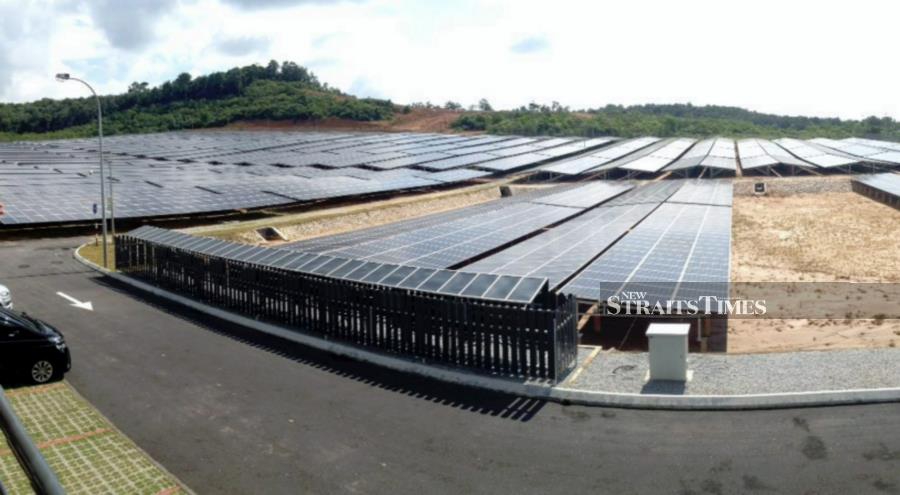CLIMATE change and increasing global efforts to achieve carbon neutrality have put greater pressure on us to accelerate decarbonisation efforts.
To that end, Prime Minister Datuk Seri Ismail Sabri Yaakob has stated Malaysia's commitment to achieving net zero emissions by 2050.
Minister in the Prime Minister's Department (Economy) Datuk Seri Mustapa Mohamed reiterated the country's commitment to a low-carbon energy transition after the expected launch of the National Energy Policy 2021-2040 later this year.
While revising the national renewable capacity target upwards is an encouraging and progressive move, the government's stance on carbon-emitting thermal power plants is inconsistent with the vision of a future centred around sustainable energy.
Last week, the same ministerial office that continuously stated its support for increasing renewable energy deployment announced that the government will stop building new coal-fired power plants only by 2040.
Apart from deviating from the government's goal of achieving net zero emissions by 2050, this sends confusing messages on the transition to a low-carbon energy system.
Coal-fired power plants have a lifespan of 40 years. So, not only can these highly polluting power plants be built 10 years before the carbon neutrality timeline, they can also remain beyond 2050.
Retiring these generational assets far before their expected end of life is challenging and potentially costly because it is unlikely for investors of these power plants to base their business considerations off a short investment horizon, given the time required to recover the costs.
This could lead to a carbon lock-in risk, where stranded assets from carbon-emitting regimes halt progress towards a low carbon energy system and eventually inhibit the transition to a sustainable energy future.
The public sector risks having to compensate investors for retiring their coal-fired power plants early to justify their investment case.
Thus, the cost of policy inconsistency would ultimately be borne by taxpayers.
Some argue that Carbon Capture and Storage (CCS) would mitigate the pollution resulting from these thermal power plants.
But CCS technologies remain uneconomical; Even the latest technology would not be able to capture 100 per cent of on-site emissions.
There will also be greater scopes of emissions throughout the entire supply chain.
As such, there should be no new coal-fired power plants if we're serious about achieving net zero emissions by 2050, considering private investments are needed to support the ambitious transformation of the energy system.
To secure investor confidence on renewables, consistent policies and market signals are needed.
The social and environmental externalities of using conventional thermal power plants, like health impacts due to air pollution, the benefits of adopting more renewable power generators and climate change mitigation through reduced emissions, need to be internalised into market incentives.
A clear trajectory on the government's plan for carbon pricing and financial support for renewables is needed. Support across all parties in parliament is crucial if the proposed plan on rebalancing the energy market is thought through.
We also need to realise that an ambitious net zero target would not be achieved by simply banning carbon-emitting thermal power plants and increasing the deployment of renewables.
The demand side will also need to be decarbonised.
End-use energy service demands, like transportation and industrial processes, need to be decarbonised largely through electrification.
To that end, there will be an increasing need to develop network reinforcements to mitigate future network congestions and investments in energy-balancing infrastructures such as grid-scale batteries and pump-hydro energy storage units to address the intermittent nature of renewable energy generation.
Therefore, the national energy plan needs to be forward-thinking to ensure associated areas are not overlooked in the process of decarbonising power generation.
Comprehensive planning, policy support, and market mechanisms will be needed.
We also need detailed plans underpinned by in-depth analyses of each area critical to a sustainable energy transition.
Comprehensive studies are required and the local socioeconomic context must also be considered to ensure a successful and equitable low-carbon energy transition in Malaysia.
The writer is an Energy Market Analyst at a leading consulting firm in London and holds an MSc in Energy Systems from the University of Oxford




